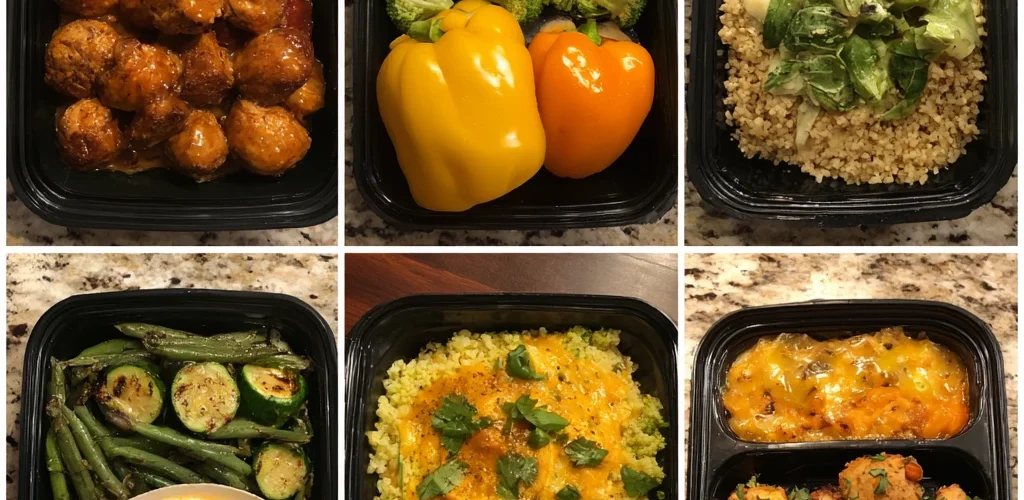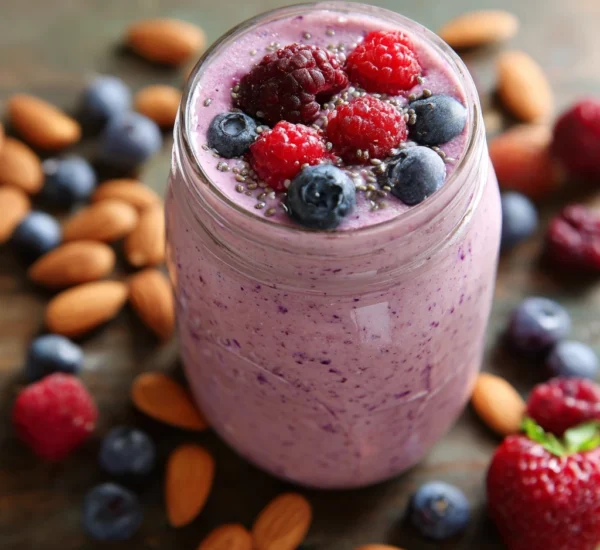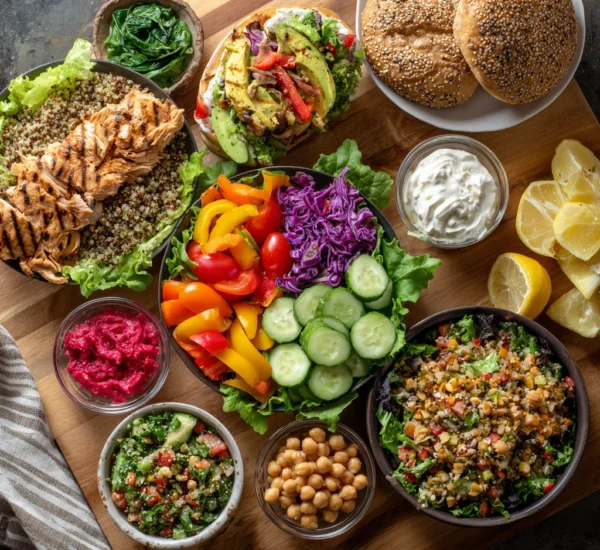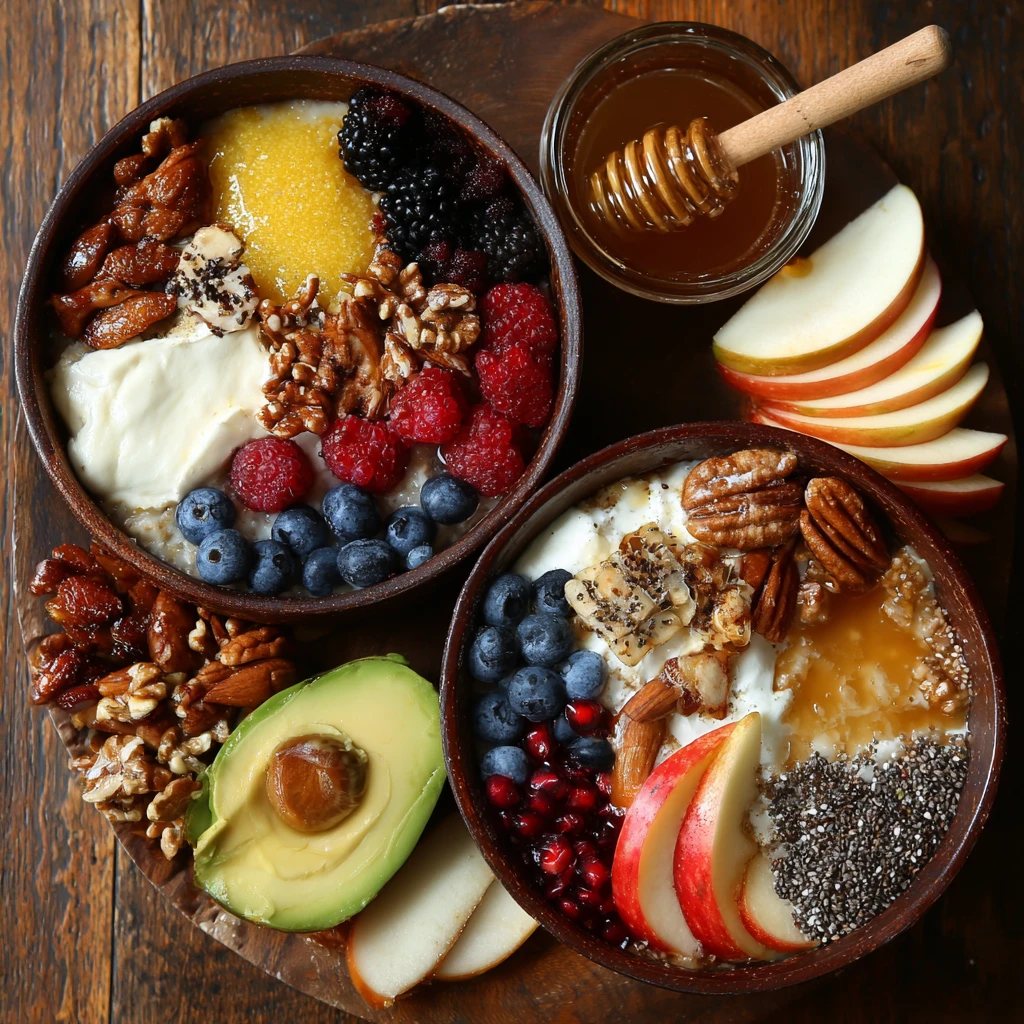Quick Meal Prep Ideas for the Workweek: Simplify Your Life
Juggling work, family, and personal commitments can leave little time for healthy eating. The temptation to grab takeout or skip meals altogether is strong, but with a little planning, you can conquer the workweek with nutritious and delicious meals. This guide provides quick and easy meal prep ideas to help you stay on track with your health goals, save money, and reduce stress.
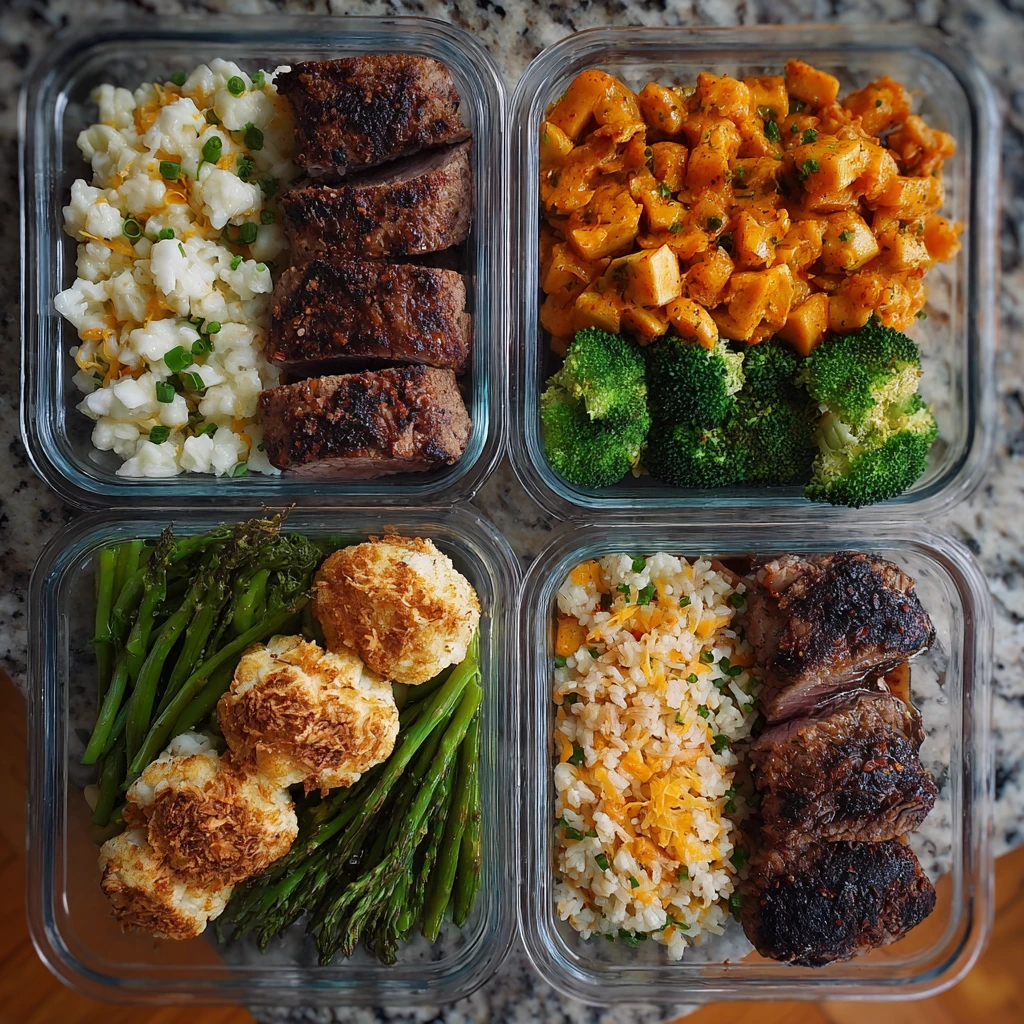
Section 1: Why Meal Prep is Your Secret Weapon
Meal prepping involves preparing meals in advance, typically on the weekend, to have ready-to-eat meals throughout the week. It’s a game-changer for busy individuals for several reasons.
Benefits of Meal Prepping
- Time Savings: Imagine reclaiming hours previously spent cooking every evening! Meal prep allows you to batch cook and portion meals in advance, freeing up valuable time during the week.
- Healthier Eating: When healthy meals are readily available, you're less likely to opt for unhealthy convenience foods. You control the ingredients and portion sizes, ensuring you're fueling your body with wholesome foods.
- Cost-Effectiveness: Eating out frequently can be expensive. Meal prepping allows you to buy groceries in bulk and minimize food waste, saving you money in the long run.
- Reduced Stress: Knowing you have a plan for your meals eliminates the daily "what's for dinner?" dilemma, reducing stress and decision fatigue.
- Improved Portion Control: Pre-portioning your meals helps you stick to your dietary goals and avoid overeating, especially important for weight management.
Getting Started with Meal Prep
The key to successful meal prep is planning. Start small and gradually increase the number of meals you prepare each week.
- Plan Your Meals: Decide what you want to eat for the week, considering your dietary preferences, allergies, and schedule.
- Create a Shopping List: Based on your meal plan, create a detailed shopping list to avoid impulse purchases.
- Choose a Prep Day: Dedicate a few hours on the weekend (or your day off) to cook and assemble your meals.
- Invest in Containers: Purchase good quality, reusable containers for storing your meals in the refrigerator or freezer.
- Start Simple: Don't try to overhaul your entire diet overnight. Begin with a few easy recipes and gradually expand your repertoire.
Section 2: Quick & Easy Meal Prep Recipes
These recipes are designed to be quick, easy, and adaptable to your preferences. They focus on using simple ingredients and efficient cooking methods.
Breakfast Meal Prep Ideas
- Overnight Oats: Combine rolled oats, milk (dairy or non-dairy), yogurt, chia seeds, and your favorite toppings (fruit, nuts, seeds) in a jar or container. Refrigerate overnight and enjoy in the morning. Variations are endless! Add protein powder for an extra boost.
- Breakfast Burritos: Scramble eggs with your choice of vegetables, cheese, and protein (sausage, bacon, or black beans). Wrap in tortillas and freeze individually. Reheat in the microwave or oven.
- Smoothie Packs: Prepare individual smoothie bags with frozen fruit, spinach, protein powder, and other desired ingredients. In the morning, simply add liquid (water, milk, juice) and blend.
- Egg Muffins: Whisk eggs with vegetables, cheese, and protein. Pour into muffin tins and bake until set. These are perfect for grab-and-go breakfasts.
- Yogurt Parfaits: Layer yogurt, granola, and fruit in a jar or container for a quick and healthy breakfast or snack.
Lunch Meal Prep Ideas
- Salad Jars: Layer dressing, sturdy vegetables (carrots, cucumbers), grains (quinoa, brown rice), protein (grilled chicken, chickpeas), and leafy greens in a jar. When ready to eat, shake the jar to distribute the dressing.
- Quinoa Bowls: Combine cooked quinoa with roasted vegetables, protein (chicken, tofu, beans), and a flavorful sauce (tahini dressing, pesto).
- Mason Jar Noodles: Layer Noodles (Ramen, Soba), precooked protein (Shrimp, Tofu, Chicken), and chopped veggies, topped with your favorite sauce. Add hot water to desired level and let sit for 5 minutes.
- Chicken and Veggie Skewers: Marinate chicken or other protein in your favorite sauce and thread onto skewers with vegetables. Grill or bake and pack with rice or quinoa.
- Lentil Soup: A hearty and nutritious soup that's easy to make in large batches and store for the week.
Dinner Meal Prep Ideas
- Sheet Pan Meals: Roast vegetables (broccoli, peppers, onions) and protein (chicken sausage, tofu) on a single sheet pan for a quick and easy dinner.
- Slow Cooker Meals: Prepare ingredients for a slow cooker meal on the weekend and let it cook while you're at work. Chili, stews, and pulled pork are great options.
- Baked Chicken and Rice: Season chicken breasts and bake them alongside rice. Serve with steamed vegetables.
- Pasta Salad: Cook pasta and toss with vegetables, protein, and a light dressing. Perfect for a quick and refreshing dinner.
- Chicken Stir-fry: Stir-fry vegetables and chicken in a wok or large skillet. Serve over rice or noodles.
Section 3: Essential Tools and Equipment
Having the right tools can make meal prepping much easier and more efficient.
- Good Quality Containers: Invest in reusable containers that are airtight and leak-proof. Glass containers are ideal for reheating in the microwave, while plastic containers are lighter and more portable. Look for containers that are BPA-free and dishwasher-safe.
- Sharp Knives: A good set of knives is essential for chopping vegetables and preparing ingredients.
- Cutting Boards: Use separate cutting boards for meat and vegetables to prevent cross-contamination.
- Large Mixing Bowls: For tossing salads, marinating protein, and mixing ingredients.
- Sheet Pans: For roasting vegetables and sheet pan meals.
- Slow Cooker or Instant Pot: These appliances are great for hands-off cooking.
- Food Processor: For chopping vegetables, making sauces, and pureeing soups.
- Measuring Cups and Spoons: For accurate ingredient measurements.
- Labels and Markers: To label your containers with the date and contents.
Section 4: Tips for Successful Meal Prepping
Follow these tips to make your meal prepping experience smoother and more enjoyable.
- Start Small: Don't try to prepare all your meals for the entire week right away. Start with a few meals and gradually increase the number as you become more comfortable.
- Plan Ahead: Take the time to plan your meals and create a shopping list before you go to the grocery store. This will save you time and prevent impulse purchases.
- Cook in Batches: Prepare large batches of staple ingredients like rice, quinoa, and roasted vegetables that can be used in multiple meals.
- Use Leftovers: Don't let leftovers go to waste. Repurpose them into new meals or pack them for lunch.
- Store Food Properly: Store food in airtight containers in the refrigerator or freezer. Label containers with the date and contents to avoid confusion.
- Thaw Food Safely: Thaw frozen food in the refrigerator overnight or use the defrost setting on your microwave.
- Be Flexible: Don't be afraid to adjust your meal plan based on your cravings or what's on sale at the grocery store.
- Clean as You Go: Wash dishes and clean up spills as you go to minimize the amount of cleanup required after you're finished cooking.
- Get Creative: Don't be afraid to experiment with new recipes and flavor combinations. Meal prepping doesn't have to be boring!
- Listen to Music or Podcasts: Make meal prepping more enjoyable by listening to your favorite music or podcasts.
- Involve Others: Make meal prepping a family affair by getting your spouse or kids involved.
Section 5: Meal Prep Storage and Safety
Proper storage is crucial for maintaining food safety and freshness.
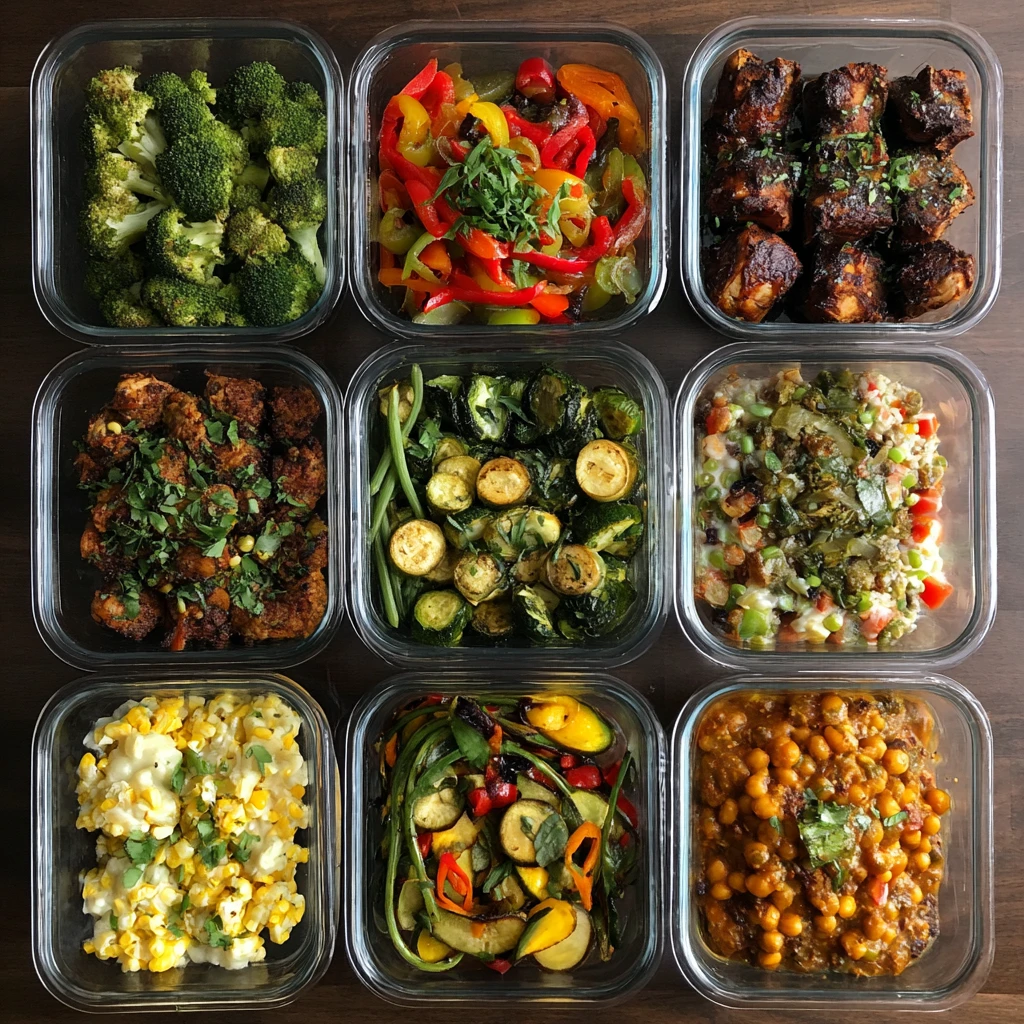
- Cool Food Quickly: Allow cooked food to cool completely before storing it in the refrigerator or freezer.
- Refrigerate Promptly: Refrigerate perishable foods within two hours of cooking.
- Use Proper Containers: Store food in airtight containers to prevent contamination and maintain freshness.
- Label and Date: Label containers with the date and contents to keep track of what's inside and avoid spoilage.
- Refrigerate at the Correct Temperature: Keep your refrigerator at or below 40°F (4°C).
- Freeze Food Properly: Wrap food tightly in plastic wrap or freezer bags before freezing to prevent freezer burn.
- Thaw Food Safely: Thaw frozen food in the refrigerator, in cold water, or in the microwave. Never thaw food at room temperature.
- Reheat Food Thoroughly: Reheat food to an internal temperature of 165°F (74°C) to kill any harmful bacteria.
- Use Food Within Recommended Timeframes: Follow recommended storage times for different types of food to ensure safety and quality.
- When in Doubt, Throw It Out: If you're unsure whether food is safe to eat, it's best to err on the side of caution and throw it away.
FAQ – Frequently Asked Questions
How long does meal prep last in the fridge?
Most prepped meals will last for 3-4 days in the refrigerator. Always check for signs of spoilage before consuming.
What foods are best for meal prepping?
Foods that hold up well after cooking, such as grains (quinoa, rice), roasted vegetables, grilled chicken, beans, and soups, are great for meal prepping.
Can you freeze meal prepped meals?
Yes, many meal prepped meals can be frozen for longer storage (typically up to 2-3 months).
What are some tips for preventing food waste during meal prep?
Plan your meals carefully, use leftovers creatively, and store food properly to minimize waste.
How do you reheat meal prepped meals?
Reheat meals in the microwave, oven, or stovetop until heated through. Ensure the internal temperature reaches 165°F (74°C).
